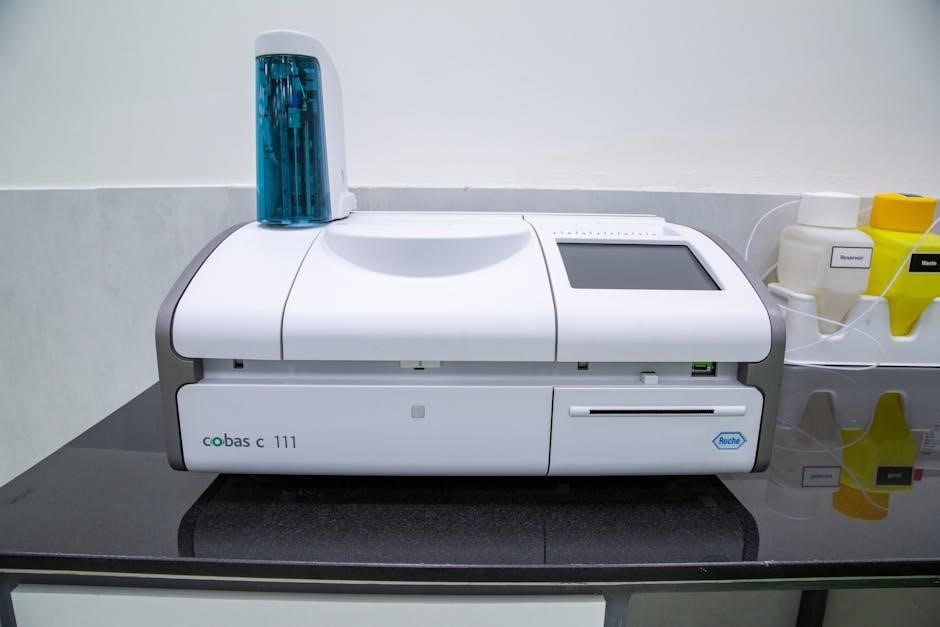NFPA 111: Standard on Stored Electrical Energy Emergency and Standby Power Systems
NFPA 111 is crucial for uninterruptible power supplies (UPS). It dictates performance for stored electrical energy systems, ensuring alternate power during normal source failure. The standard addresses installation, maintenance, operation, and testing. You can find the NFPA 111 PDF online from various sources.
Overview of NFPA 111
NFPA 111, the Standard on Stored Electrical Energy Emergency and Standby Power Systems, establishes performance criteria for these systems. It’s essential where an Uninterruptible Power Supply (UPS) is needed, guaranteeing a reliable alternate power source during normal power disruptions. Unlike NFPA 110, NFPA 111 specifically addresses stored energy systems.
This standard encompasses categories of power supplies, transfer equipment, controls, and supervisory equipment; It provides a comprehensive framework for designing, installing, and maintaining stored emergency power supply systems, ensuring safety and reliability. NFPA 111 covers performance requirements for stored electrical energy systems that provide an alternate source of electrical power in buildings and facilities.
NFPA 111 outlines requirements for installation, maintenance, operation, and testing of Stored Emergency Power Supply Systems (SEPSS). While it specifies these technical aspects, it does not cover the application of SEPSS or distribution details. The standard is regularly updated, with editions like the 2016, 2019 and 2022 versions available. These updates reflect advancements in technology and lessons learned from real-world applications. You can download NFPA 111 PDF versions from sources like Z-Library or purchase it from the NFPA website.
Scope of NFPA 111
The scope of NFPA 111 is clearly defined: it covers performance requirements for stored electrical energy systems. These systems provide an alternate power source in buildings and facilities when normal electrical power fails; This includes key components and their assembly for emergency and standby power.
NFPA 111 focuses on the functionality and reliability of stored energy systems. The standard applies to stored electrical energy systems providing an alternate source of electrical power in buildings and facilities in the event that the normal electrical power source fails. It encompasses installation, maintenance, operation, and testing requirements, specifically as they pertain to the performance of the Stored Emergency Power Supply System (SEPSS).
The standard’s focus ensures that systems will perform as expected during an outage. However, NFPA 111’s scope also includes exclusions. It does not cover the application of the SEPSS or the distribution of power within the facility. The document addresses the performance of stored energy systems with appropriate equipment detail and does not require the installation of stored energy systems. These limitations help to keep its focus sharp. The standard’s editions, such as the 2016 edition, are available in PDF format.

Performance Requirements for Stored Electrical Energy Systems
NFPA 111 outlines specific performance requirements for stored electrical energy systems. These requirements are designed to ensure reliability when normal power is disrupted. The standard addresses the necessary criteria for the selection and assembly of components. This ensures the systems provide an alternate source of electrical power in buildings and facilities.
The core of NFPA 111 revolves around the performance of stored energy systems, detailing equipment specifications. It establishes categories for power supplies, transfer equipment, controls, and supervisory equipment. This comprehensive approach covers related electrical and mechanical elements. The standard mandates one-step loading for prime movers and updates battery technology requirements.
The goal is to maintain a continuous and reliable power supply during outages. NFPA 111 also focuses on preventing unnecessary transfers of loads to minimize disruptions. Battery maintenance is critical, so NFPA 111 includes guidelines for ensuring batteries are properly maintained. Proper maintenance ensures the system’s readiness. The performance criteria outlined in NFPA 111 are essential for safety and operational continuity. This is why understanding the NFPA 111 PDF document is crucial for those involved in designing, installing, and maintaining these systems.
Application of NFPA 111
NFPA 111 finds its application in a wide array of buildings and facilities where a reliable alternate power source is crucial. It governs the design, installation, and maintenance of stored emergency power supply systems (SEPSS), ensuring their functionality when needed. Industries that heavily rely on NFPA 111 include finance, information technology (IT), and specific areas requiring uninterrupted power.
The standard is key where an uninterruptible power supply (UPS) is essential during normal utility supply disruptions. NFPA 111 provides performance requirements for stored electric energy systems. These systems offer an alternate source of electrical power during interruptions. NFPA 111 applies to diverse facilities needing backup power, ensuring safety and operational continuity.
It is generally applicable to building emergency and standby power systems. NFPA 111 is vital for facilities needing continuous power during outages. This includes data centers, hospitals, and critical infrastructure. The standard’s application ensures the safety and operational resilience of these facilities. By adhering to NFPA 111, organizations can minimize disruptions. They can ensure the reliable operation of essential systems during power failures. Consulting the NFPA 111 PDF will provide detailed guidance for specific applications;
Industries Using NFPA 111
NFPA 111, the Standard on Stored Electrical Energy Emergency and Standby Power Systems, is crucial across numerous industries where uninterrupted power is paramount. The finance sector heavily relies on this standard to ensure continuous operation of trading platforms and data centers. Information Technology (IT) also extensively uses NFPA 111, safeguarding critical servers and network infrastructure from power disruptions.
Healthcare facilities, particularly hospitals and emergency rooms, depend on NFPA 111 to maintain life-support systems and essential medical equipment during power outages. Data centers, vital for storing and processing information, implement NFPA 111 to prevent data loss and system downtime. Telecommunications companies utilize the standard to keep communication networks operational during emergencies.
Government facilities and critical infrastructure, such as transportation and utilities, apply NFPA 111 to ensure public safety and security. Manufacturing plants use stored energy systems to prevent production losses and equipment damage. Any industry requiring a reliable backup power source during utility failures benefits from adhering to NFPA 111. Ultimately, the NFPA 111 PDF provides guidelines for the safe design, installation, and maintenance across these varied sectors.
Installation Requirements (SEPSS)
The installation of Stored Emergency Power Supply Systems (SEPSS) as per NFPA 111, demands meticulous attention to detail to ensure reliability and safety. Proper location is crucial; SEPSS equipment should be housed in dedicated spaces, protected from environmental hazards, and readily accessible for maintenance. Adequate ventilation is necessary to prevent overheating and ensure optimal battery performance.
Wiring and connections must adhere strictly to the National Electrical Code (NEC) and local regulations. Overcurrent protection devices, such as fuses and circuit breakers, are essential to safeguard against electrical faults. The SEPSS must be securely mounted to prevent displacement during seismic events or other disturbances.
Battery installations require careful consideration of battery type, capacity, and charging requirements. Proper grounding is vital to minimize electrical noise and prevent shock hazards. Clear labeling of all components and wiring is necessary for easy identification and troubleshooting. Regular inspections during installation are crucial to verify compliance with NFPA 111 and manufacturer’s specifications.
Finally, documentation of the installation process, including wiring diagrams and test results, is essential for future maintenance and troubleshooting. Consulting the NFPA 111 PDF provides detailed guidance on these installation requirements.

Maintenance Requirements (SEPSS)
Maintaining a Stored Emergency Power Supply System (SEPSS), as outlined in NFPA 111, is crucial for its reliable operation during power outages. A comprehensive maintenance program should include regular inspections, testing, and preventative measures. Battery maintenance is paramount, involving periodic checks of electrolyte levels, terminal connections, and overall battery health. Damaged or degraded batteries must be replaced promptly to ensure adequate backup power.
Connections should be inspected for corrosion and tightness, as loose connections can lead to voltage drops and system failures. The charging system needs regular monitoring to verify proper charging rates and voltage levels. Ventilation systems must be kept clean and free of obstructions to prevent overheating.
Transfer switches should be exercised regularly to confirm their proper operation and prevent mechanical seizure. Visual inspections of all components, including wiring and enclosures, are essential to identify any signs of damage or deterioration. Detailed records of all maintenance activities, including dates, findings, and corrective actions, should be maintained for future reference.
Adhering to the manufacturer’s recommendations and consulting the NFPA 111 PDF are crucial for establishing and implementing an effective SEPSS maintenance program. Consistent maintenance ensures that the SEPSS will perform reliably when needed.
Operation Requirements (SEPSS)
NFPA 111 outlines specific operational requirements for Stored Emergency Power Supply Systems (SEPSS) to ensure their effectiveness during power interruptions. These requirements focus on readiness, transfer capabilities, and system monitoring. The SEPSS must be designed to automatically start and transfer power to critical loads within a specified timeframe upon detecting a power failure. Regular testing and inspections, as detailed in the NFPA 111 PDF, are crucial to verify this automatic operation.
Operators should be trained on the proper procedures for system startup, shutdown, and manual override. The SEPSS should be equipped with clear and readily accessible operating instructions. Monitoring systems are essential to continuously track battery voltage, charging current, and system status. Alarms should be in place to alert personnel to any abnormal conditions, such as low battery voltage or system malfunctions.
Load management is also an important operational consideration. Non-essential loads should be automatically shed during emergency operation to maximize the runtime of the SEPSS. Regular drills and simulations should be conducted to familiarize personnel with emergency operating procedures and to validate the system’s performance under simulated power outage conditions. Adherence to these operational requirements ensures that the SEPSS will function as intended when needed.
Testing Requirements (SEPSS)
NFPA 111 mandates rigorous testing protocols for Stored Emergency Power Supply Systems (SEPSS) to guarantee reliability. These tests are designed to verify the system’s ability to perform as intended during a power outage. Initial acceptance testing is crucial to confirm that the SEPSS meets all performance requirements after installation. Periodic testing, conducted at specified intervals, ensures continued functionality throughout the system’s lifespan.
Testing procedures include simulating a power failure to assess the system’s automatic startup and transfer capabilities. Load bank testing is performed to evaluate the SEPSS’s ability to supply power to critical loads for the required duration. Battery testing is essential to determine the battery’s capacity and overall health. Specific tests, like capacity tests and impedance tests, are conducted to identify any degradation or potential failures.
Detailed records of all testing activities must be maintained, including test dates, procedures, results, and any corrective actions taken. Qualified personnel, familiar with NFPA 111 requirements and SEPSS operation, should conduct these tests. Any deviations from the standard’s performance criteria must be addressed promptly and thoroughly. Regular adherence to these testing requirements, as detailed in the NFPA 111 PDF, ensures the SEPSS remains a dependable source of emergency power.
Exclusions from NFPA 111
NFPA 111, while comprehensive, explicitly excludes certain aspects related to stored electrical energy systems. One key exclusion is the application of the Stored Emergency Power Supply System (SEPSS). The standard focuses on performance requirements, installation, maintenance, operation, and testing, but it does not dictate where a SEPSS should be used or which specific facilities require one. This decision is left to other codes, standards, or the facility’s risk assessment.
Distribution systems beyond the SEPSS output are also excluded. NFPA 111 addresses the SEPSS itself, up to the point where power is delivered to the load, but not the downstream wiring or equipment. Detailed design of the power distribution network is covered in other relevant electrical codes and standards.
Furthermore, NFPA 111 does not cover specific requirements for the application of the SEPSS. Decisions regarding the loads to be served by the system are determined by other codes, standards, or facility requirements. The standard primarily focuses on the performance of the SEPSS, not on the selection of appropriate applications. This ensures clarity by focusing the standard’s scope on the core aspects of SEPSS functionality and reliability, as detailed in the NFPA 111 PDF.
NFPA 111 Editions and Updates
NFPA 111, like all NFPA standards, undergoes periodic review and updates to reflect advancements in technology, address emerging safety concerns, and incorporate lessons learned from real-world applications. Understanding the different editions of NFPA 111 is crucial because requirements can change significantly between versions. For example, the 1993 edition included a basic requirement for one-step loading for all prime movers.
The 2016 edition included design, installation, and maintenance provisions. The 2019 edition of NFPA 111 is available for purchase. The 2022 edition is also available and may contain further updates and revisions. Users should always refer to the latest adopted edition by their jurisdiction.
These revisions often impact testing protocols, maintenance schedules, and acceptable technologies for stored energy systems. Accessing the NFPA 111 PDF for the correct edition is critical for compliance. Staying current with the latest edition ensures that stored emergency power supply systems are designed, installed, and maintained according to the most up-to-date safety standards.
Relationship to NFPA 110

NFPA 110 and NFPA 111 are related standards concerning emergency and standby power systems, but they address different aspects. NFPA 110, “Standard for Emergency and Standby Power Systems,” focuses on performance requirements for emergency and standby power systems using various power sources, including generators.
NFPA 111, “Standard on Stored Electrical Energy Emergency and Standby Power Systems,” specifically addresses systems utilizing stored electrical energy, such as batteries or UPS systems, as the alternate power source. While NFPA 110 covers a broader range of power sources, NFPA 111 delves into the specific requirements for stored energy systems.
Both standards aim to ensure reliable alternate power in buildings and facilities during normal power source interruptions. They both establish categories of power supplies, transfer equipment, controls, and supervisory equipment. Understanding the distinctions between NFPA 110 and NFPA 111 is crucial for selecting the appropriate standard based on the type of emergency power system being implemented. They must work together to ensure total protection.
Availability of NFPA 111 PDF

Accessing the NFPA 111 PDF is essential for understanding and implementing the standard’s requirements for stored electrical energy emergency and standby power systems. The NFPA 111 PDF is available for purchase through the NFPA’s official website and other authorized distributors like Amazon.com.
The NFPA website offers various options, including individual downloads and subscriptions. Some websites may offer the NFPA 111 PDF for free download, however, it is crucial to ensure the source is reputable and the document is the official, unaltered version. Using unofficial or outdated versions can lead to non-compliance and potential safety hazards.
Purchasing the NFPA 111 PDF ensures you have the most up-to-date and accurate information for designing, installing, and maintaining stored emergency power supply systems. Several editions are available, so verify you acquire the correct edition for your project. Consider Z-Library if you want another option.
